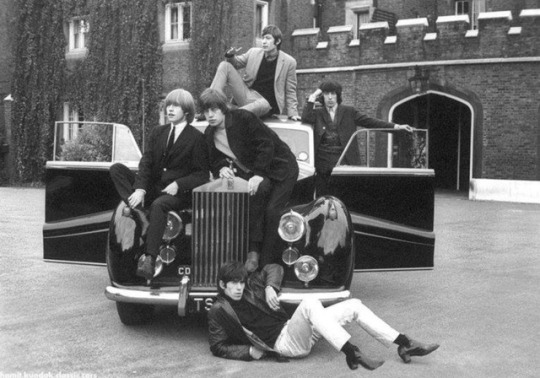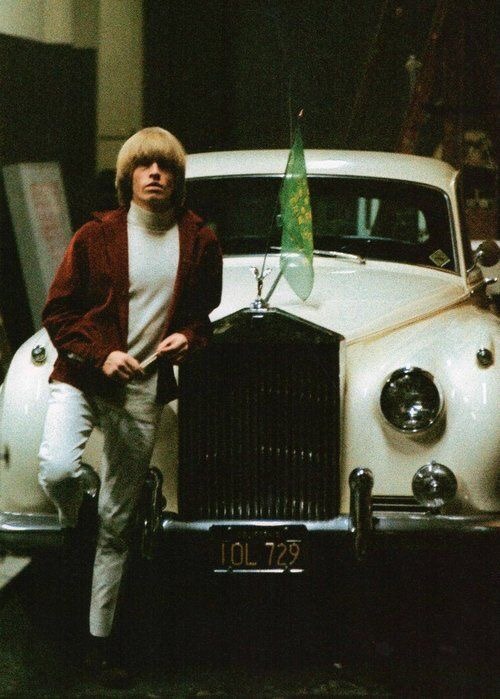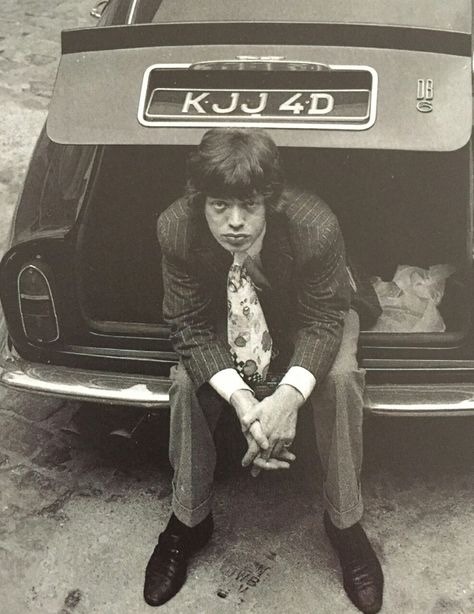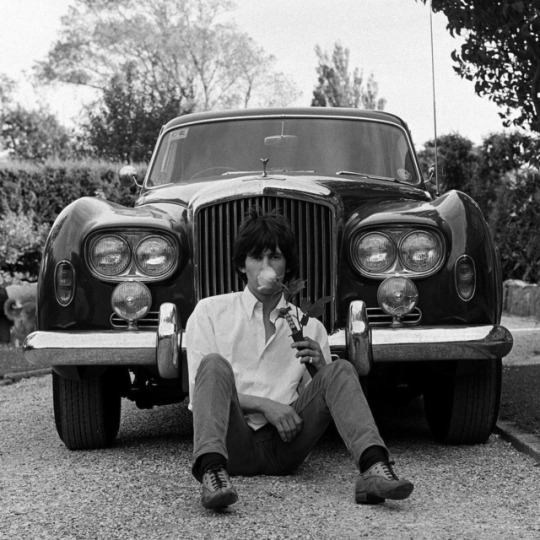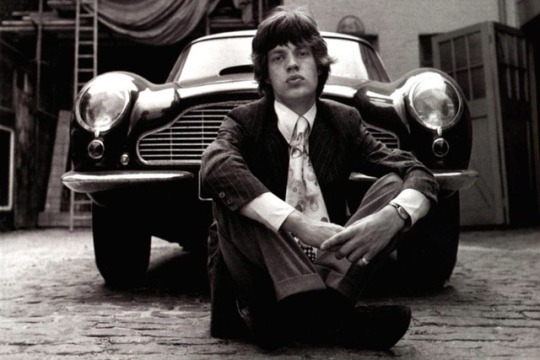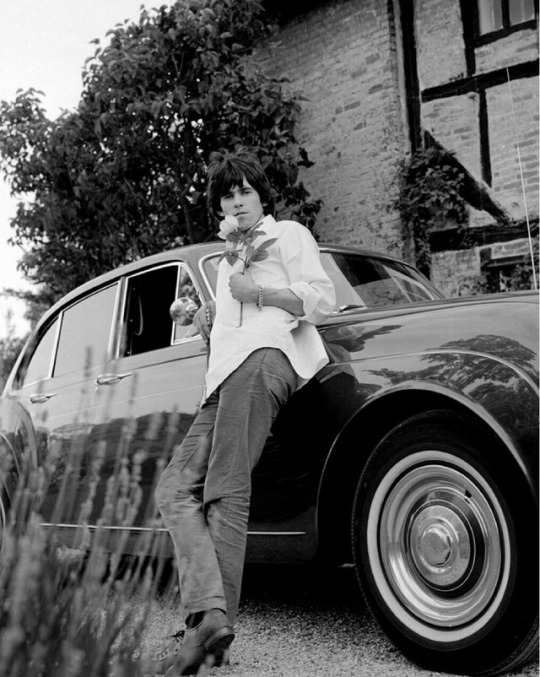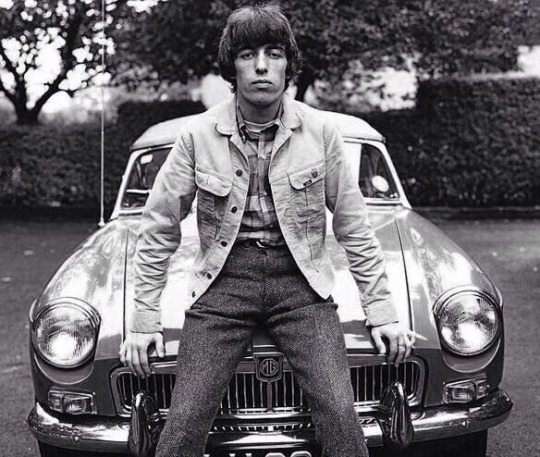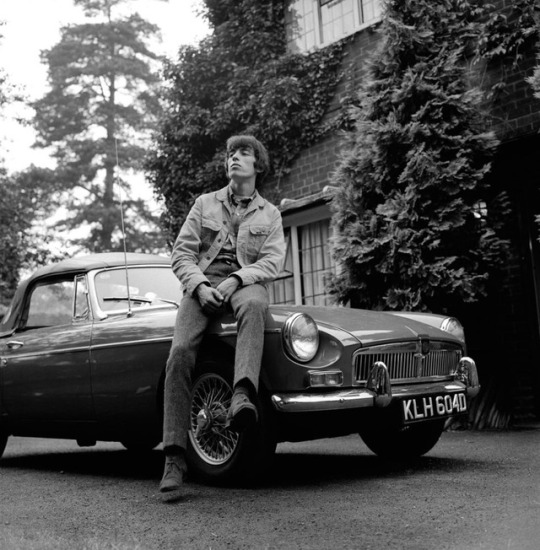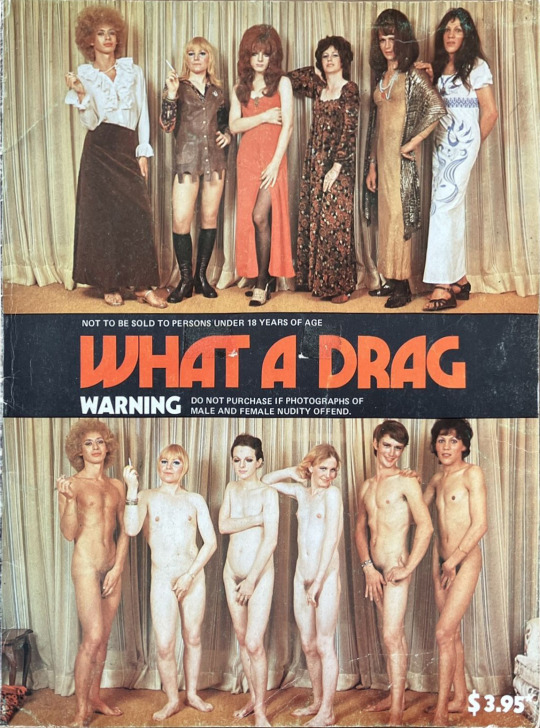Text
One Love film review: Part Three
Landmarks are almost always accompanied by music and the film’s soundtrack has a lot to offer in regards to the part it plays in telling the story well. Some standout moments occur such as the faded version of ‘No Woman No Cry’ echoing in the background as Bob lovingly stays beside Rita when she ends up unconscious and injured with a bullet wound, and literally ‘Jammin’’ in the studio with the Wailers as they record songs for Exodus. Pivotal moments are made when Bob debuts or plays a song, whether its to a crowd of thousands of people during the Europe tour or to his family around the fire. For him, reggae meant home and when he was playing, he was returning.
The clashing of colours in the cinematography when we transition from Jamaica to London is a hint of the challenges and shifts that the group face when recording and playing there. Although Bob witnesses this firsthand, especially during an altercation with the police in Trafalgar Square, he manages to thrive and find inspiration when stumbling upon the UK punk scene that was, by the late 1970’s beginning to bubble up all over the country but was already embracing reggae and ska elements. He remarks their sense of rebellion and the stunning flashes of red in this scene refrains again when hiring a young guitarist to play with the group. Our still camera moment begins to dwindle as Bob spends more time with the group in London - a hectic energy emerges on the screen, with sharp cuts and arguments unfolding between band members. A sense of relief and the loss of control is calmly reversed through Bob finding resolution and redemption in his home country. The film’s conclusion comes when his final bow was finally realising his initial vision: promoting peace. He accepts death but welcomes the future, blissfully aware that he has made his mark.
Bob Marley’s story is definitely one about love, the love he had for Jamaica, for Rastafari, for his family and most importantly his music. The film, while not perfect, offers a very near, very convincing fleshing out of Bob Marley; his stories, his memories and his vision, one that has not been attempted before. While some gaps still remain, the film’s contribution to his legacy is another opportunity for everyone to know him a little better.
PS, I feel very sorry for the guy who played Mick Jagger for two seconds.
1 note
·
View note
Text
One Love film review: Part Two
One thing I really loved about this film was that the casting did not rely on blatant, plastic ‘look-a-like’ actors. Even though Kingsley Ben-Adir hardly resembles Bob Marley, this is made up for his surprisingly believable dialogue delivery and almost identical mannerisms; how Marley would casually light up a room with his infectious spirit, and his outspoken positivity regarding his Rastafarian roots. He is presented less as a faraway idol but rather a feeling man who allows his experiences, good or bad, to shape him, learning from them along the way. He walks through London’s underground among many different faces who do not recognise him, and he is nonchalant towards any threats. His world opens up with the director’s decision to not water down the script for Hollywood’s sake - it is presented as a pure Jamaican production, while not exactly English friendly (I myself had to research some terms but that this wasn’t a boring task!) the emotions and feelings are still there and still felt. We can see it in the closeness of relationships, body language and behaviour. The acting is powerful enough to overcome any language barriers. Ben-Adir’s charisma is an equal match for Lashana Lynch, who played Rita Marley. It’s quickly made apparent that she is his grounding force amongst his rapid rise, as she is the one who nudges Bob to return to Jamaica after his cancer diagnosis. Much emphasis is laid on the presence of women in his life, how they help to remove him from the clutches of arrogant fame as well as their influence on his music. I adored watching their relationship survive, overcoming struggles, sharing stories and reconnecting each other with their heritage. Biopics have a tendency to cast dark shadows over the people we thought we knew to make them have an ‘edge’ (worst case scenario, the domestic abuse scenes in the ambiguous Jimi Hendrix film, All Is By My Side) but in One Love, Bob Marley is brightened as his relationship with his wife is dealt with directly and realistically.
The band’s tensions feel very genuine too, with their quick back-and-forth conversations with each other. Making reggae music is seamless and effortless to all of them, as if it is a second nature. It is gorgeously harmonious with its equal share of musician banter that makes them likeable as well.
1 note
·
View note
Text
One Love film review: Bob Marley and the pollution of peace
'Music runs like river...'
youtube
Music biopics need to have one clear objective: to bring the icon we know closer to being the person that was. There is something fascinating about learning about the human rather than the star; how they lived, their relationships with others and the events of their lives. Their legacy is respected but the writers are unafraid to reveal them at their worst. Fame makes people vulnerable. Depending on the real life outcome, we can either sadly watch them suffer and crumble, or marvel at their resilience and strength. The legend of Bob Marley is an outlier in this phenomenon. Even though he passed away at the young age of 36, he never crumbled during his short life. He overcame struggles and pursued his passions, which in turn supported his musical success. Whatever didn’t kill him, made him stronger, and despite looking death in the eye with a foreboding diagnosis of skin cancer, he and the Wailers toured doggedly to spread his message.
Now, Marley’s odyssey, detailed from his reputation as a humble folk hero in his home country of Jamaica to a worldwide anti-war symbol, is furthermore immortalised in a new cinematic retelling. With his wife, Rita Marley, and his son, Ziggy Marley at the helm of the production team, their decisions and chosen ways to portray not just the musician himself but both a husband and a father are evidently significant. The domestic air of this film shines through more than the glitz and glamour of Marley’s touring life. Instead, director Reinaldo Marcus Green, who also co-wrote the film’s screenplay, aims to paint a thorough picture of Bob Marley’s familial relationships within his inner circle. It dares to go deeper into how he functioned as a person as well as an artist. It is a non-linear tale. Told through mostly flashbacks and memories after we begin with a dramatic ‘en medias res’ of a press conference before the infamous shooting, the narrative comes to the viewer in fragments and puzzle pieces. This can suggest that the movie is made for those who already know how the story goes, and although this can make it harder to follow with a slower start compared to many other biopics who chose to tell the person’s story from the very beginning, this layout actually makes for a very realistic image of Bob Marley’s mindset ahead of his success. Despite being thrown into the action early on, the film is an easygoing watch with a narrative that’s okay for those who want a basic, non-generic grasp on Marley’s inspirational story.
0 notes
Text
I put some of the greatest love songs into Google Translate and the results were... interesting.
To get one thing out of the way, not everyone likes Valentine's Day. Some people are broke, some people are alone and some people see it as a moneymaking marketing scheme to play on your emotions. Damn you, capitalism! Curse you for making me feel bad if I don't spend my hard-earned money on expensive flowers that will die five days after I purchase them!
There's one thing I like about Valentine's Day though. We get to dig out those cheesy, lovey-dovey hits. The rock ballads, the pining sonnets, oh the songs of affection and romance and... love. Ick.
I could've dived into what makes Dolly Parton's I Will Always Love You a good song, but does anyone actually care? We need cheering up. You shouldn't take love so seriously. So I didn't.
I put a handful of everyone's favourite love songs and threw them into the messy blender that is Google Translate. And while they were in there, they were massacred. Slaughtered. Murdered. I'm guilty of murder here, folks. The things I do for love? I digress.
‘God Only Knows’ by the Beach Boys
I put Brian Wilson's masterpiece through a translation of English to French, then to Spanish, to Japanese, to German, to Russian, to Malay, to Italian, to Japanese again and then back to English.

Shushing and psychopathic laughter ensues!
'She Loves You' by the Beatles
I dragged 'She Loves You' through to traditional Chinese, to Korean, to Vietnamese, then to simplified Chinese, then grounded it in Welsh. This was the final English result.
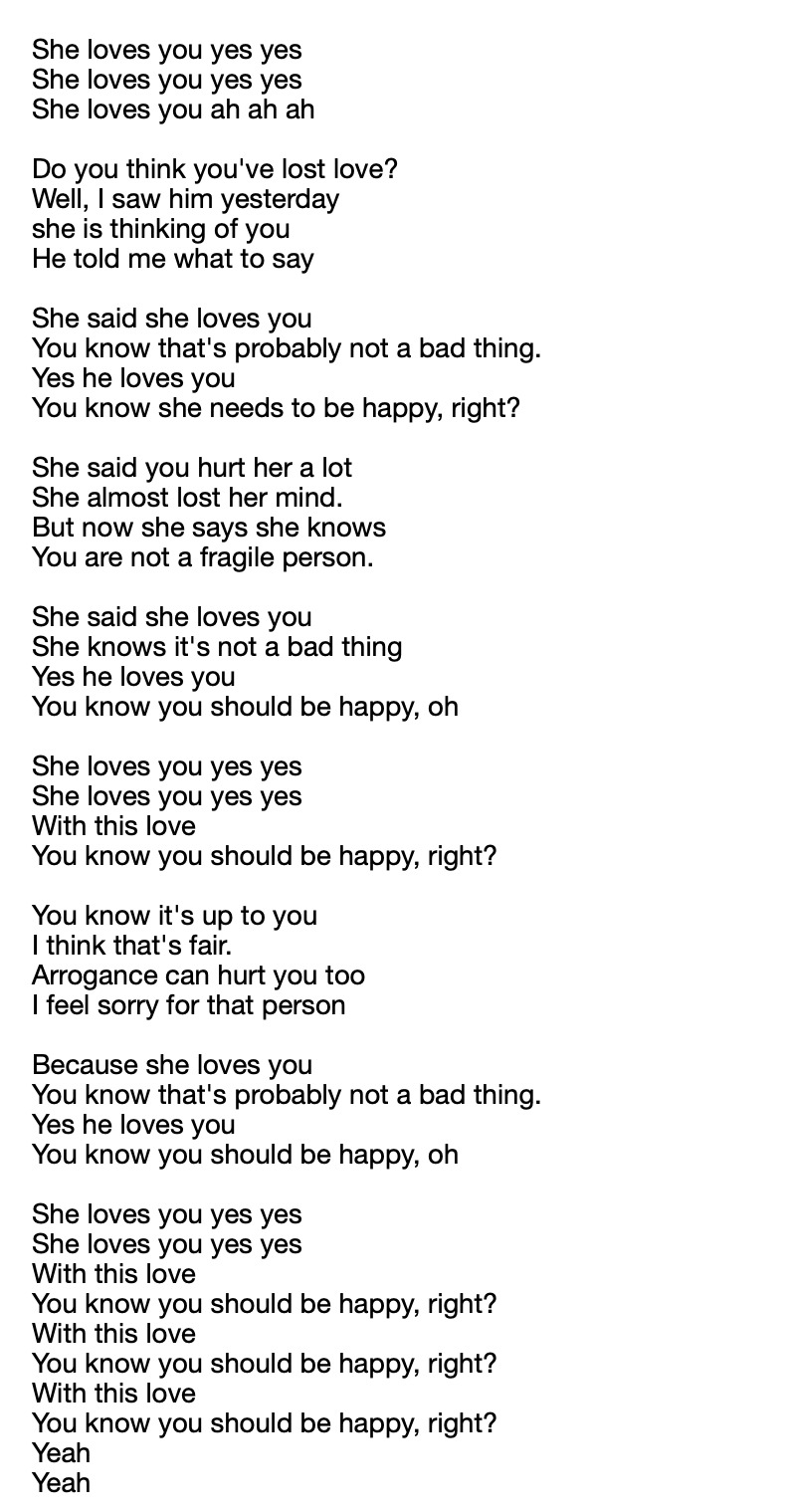
Still a sweet love song. Sounds a little antagonistic now though... YOU KNOW YOU SHOULD BE HAPPY, RIGHT?!
''Woman in Love' by Barbra Streisand
Barry Gibb of the Bee Gees famously penned this beautiful song for Barbra Streisand, and it became one of the most successful hits of her career. Let's see if it's still beautiful after suffering through Russian, to Polish, to Hungarian, to Ukrainian, to Mongolian, to Norwegian and finally, Dutch and English.

We think... holistically. Okay, Barbra.
'My Girl' by The Temptations
'My Girl' has been covered and re-recorded by lots of different artists over the years, from Otis Redding to The Rolling Stones; it is a timeless take on devotion and admiration. Ah who cares, let's translate it to Azerbaijani, to Lithuanian, to Romanian, to Estonian, to Punjabi, to Urdu, to Bengali and see what happens.

This was the best one. Some classic lines here. He ate the sun. Bye bye uncle! I'm not sure how the translation got so confused between family dynamics but I am very grateful.
'My Heart Will Go On' by Celine Dion
Titanic made millions at the box office, and this song is most associated with the perilous, doomed love story of Jack and Rose. And just like the ship, this song goes down very fast... translated from Bengali, to Urdu, to Arabic, to Sepedi, to Yoruba, to Samoan, to Kurdish, and finally to its native English...
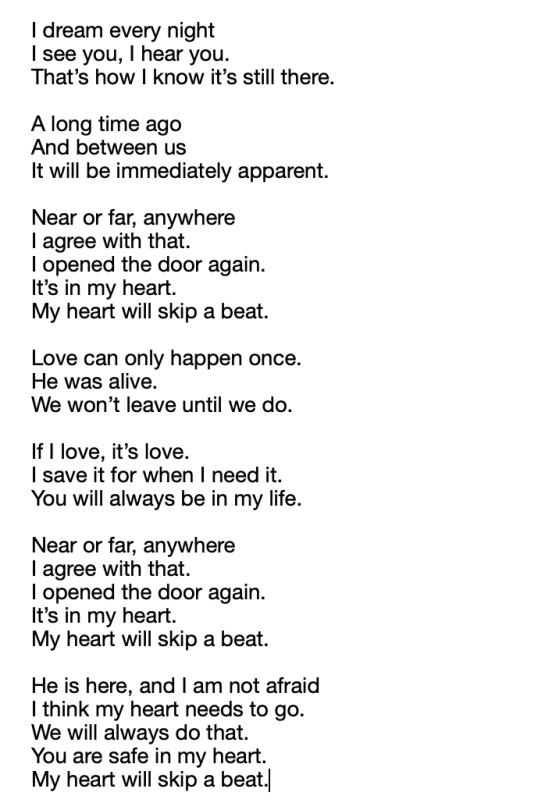
I'm not sure why, but it sounds very argumentative. I opened the door again... IT'S IN MY HEART!! NO!!
'Make You Feel My Love' by Adele (Bob Dylan)
Adele's hit rendition of 'Make You Feel My Love' became a stepping stone to her almost endless curriculum vitae of modern love songs. She can thank the breezy, loving lyricism of Bob Dylan - the dying honesty of his words is what makes the song so emotional to listen to. I was curious but also worried to see how lost this one could get in translation, since the language is very transcendent and grounded. Anyway, here it is translated roughly seven times through Basque, Arabic, Azerbaijani, Portuguese, Romanian, Urdu and Hindi. Also bit of Yiddish for good measure.
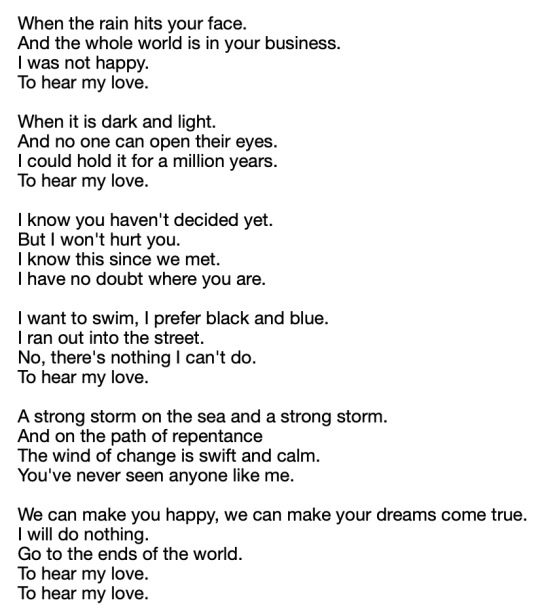
I personally like the anticlimax at the end - I will, actually, do nothing.
'Your Song' by Elton John
Elton John's simple love song is in actuality one of his most popular, successful and recognisable pieces of music in his discography. So there must be some sort of redemption for these lyrics in Google Translate, right? RIGHT? Let's find out. I translated the song through around ten times, from Icelandic to Macedonian, Punjabi to Arabic, to both simplified and traditional Chinese, to Japanese, then to Arabic again, then to both forms of Chinese again.
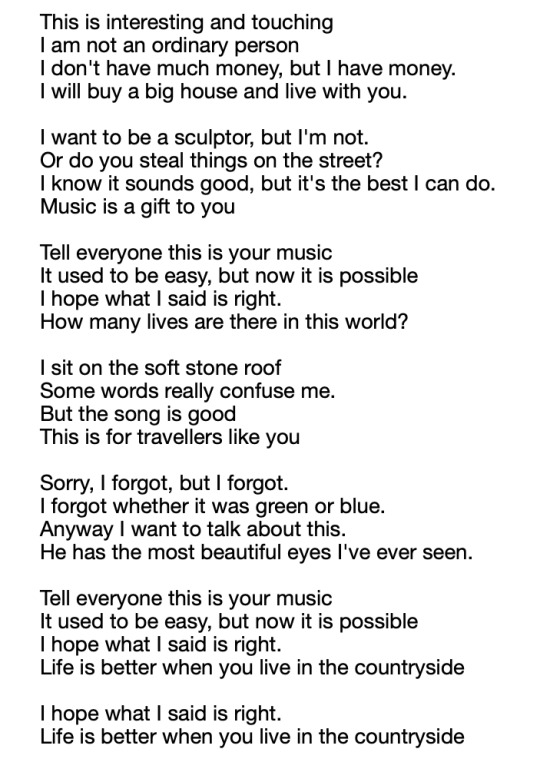
I do like how it becomes less about the girl and more about living in the countryside. Maybe he was put off by the idea that she was stealing things from the street.
There we are! God, what a cesspool. What have I created?
Anyway, I hope everyone had a great Valentine's Day and got spoilt rotten. This was just for a bit of fun, though I spent an embarrassingly long amount of time trying to get Google to operate with non-sensical mish-mashes of the English language...
0 notes
Text
happy christmas
youtube
1 note
·
View note
Text

James Dean photographed by Sanford Roth, 1955.
1K notes
·
View notes
Text
I have already lost touch with a couple of people I used to be.
Joan Didion
594 notes
·
View notes
Text
now and then... i miss you...
folks what we thinking about the new beatles song? do you like it? do you not like it? i'm just curious to see how everyone feels.
1 note
·
View note
Photo
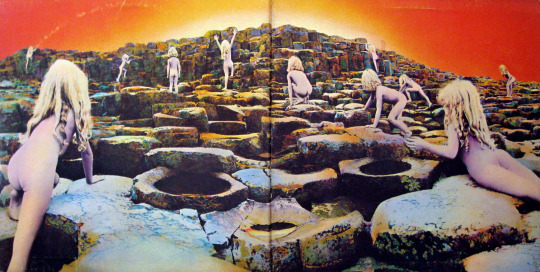
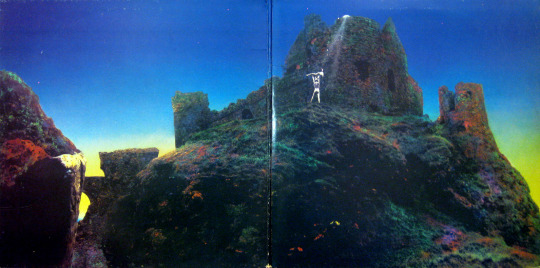
Led Zeppelin - Houses of the Holy, 1973.
Cover art by Hypgnosis.
1K notes
·
View notes
Text

A Wet Moon, Putney Road, John Atkinson Grimshaw, 1886
1K notes
·
View notes
Photo
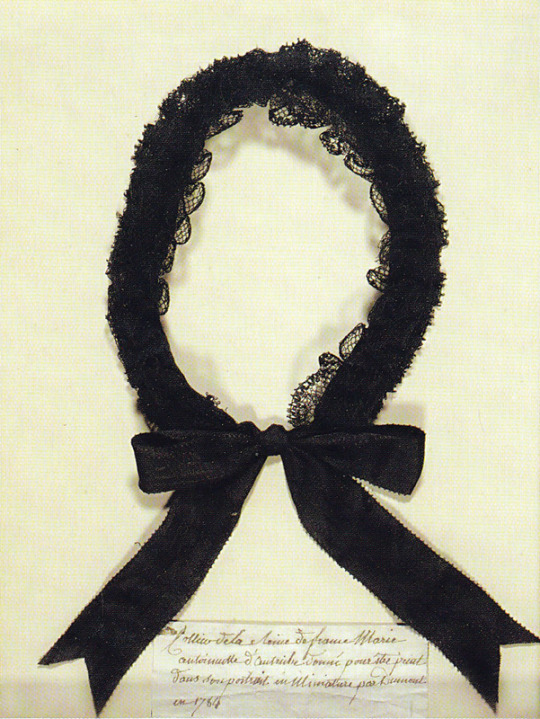
A black head or hat ribbon worn by Marie Antoinette.
Image source: My scan
4K notes
·
View notes
Photo


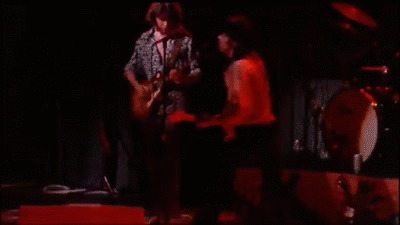
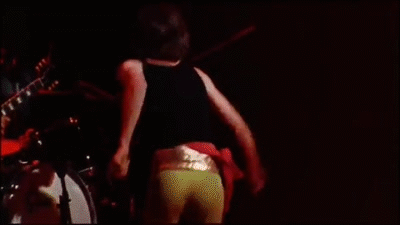
Mick Jagger and Keith Richards performing ‘Happy’ with the Rolling Stones in 1971
234 notes
·
View notes
Text
this but imagine being high off your ass in 1967 and hearing the entirety of sgt peppers for the first time. would be fking losing my mind with for the benefit of mr kite while coming down from the acid
imagine being high off your ass in 1964 and turning the radio on and you hear house of the rising sun by the animals for the first time. my soul would leave my body id fucking die
7K notes
·
View notes
Text
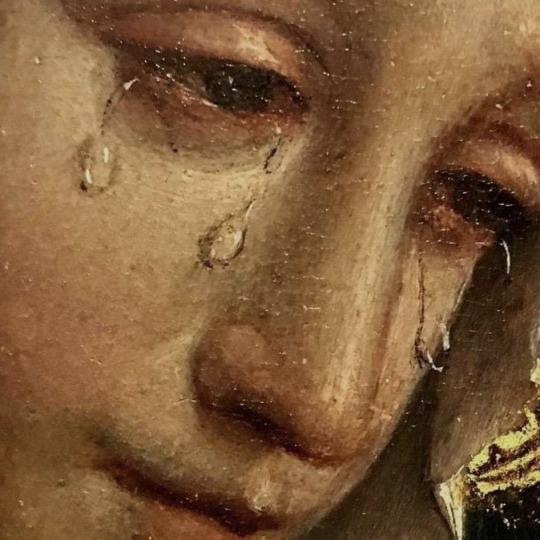




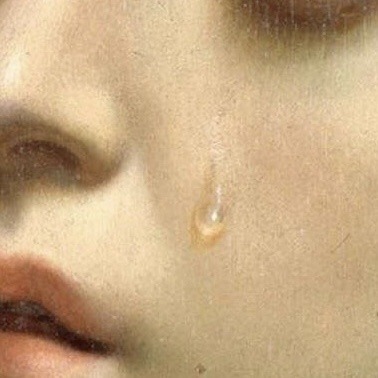

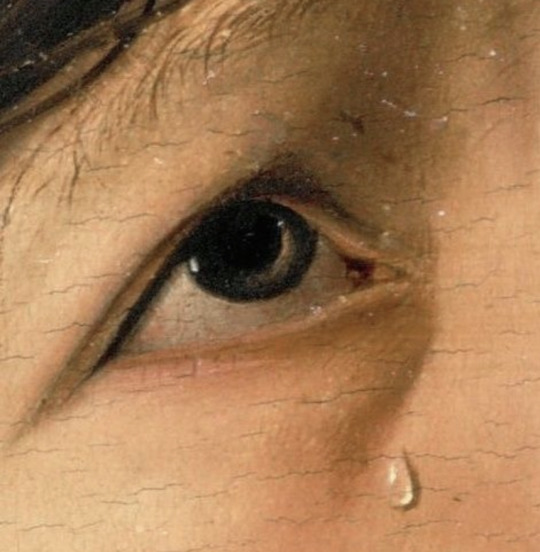

“Crying is a sign of strength. It is a demonstration of a completely comfortable relationship with the self. Choosing to cry and feel is a choice in the interest of one’s emotional health. Choosing to cry is also choosing not to care about the opinions of others. Since crying is so stigmatized, rising above society’s thoughts is pure authenticity. Crying also helps set an example to others. Especially in recovery when peers are struggling to connect with, articulate, and express their own emotions, seeing someone freely express themselves is inspiring. Not only will they learn from the act of crying, but they will see the transformation that takes place from working through emotions.” source
6K notes
·
View notes
Text
Happy Halloween! I wrote a little feature on scary Beatles stuff.
Last year, I compiled a list of my personal scariest songs, and it was a lot of fun to see the variety of genres and artists that have the potential to make truly terrifying music. But who do I think has the potential to reign supreme on the uncomfortable songs scale? That's right, the Beatles.. especially in a time where groups were actively encouraged to make radio-friendly teen pop music.
There's lots I wanted to talk about, but I decided to focus specifically on the 1964-1965 period of Hard Day's Night and Rubber Soul, which is weird because when people think of scary Beatles songs they usually think of White Album tracks or Magical Mystery Tour, even though I do believe their earlier records have some frightening elements..
Run For Your Life: The Hidden Horrors of the Beatles (1964-1965)
I briefly annotated Revolution 9 by the Beatles as one of the most horrifying songs ever recorded, with its stressful, drug-fuelled instrumental incoherence. However, after realising the true extent of actually fear-inducing tracks by the Beatles, I wanted to magnify and look closer at their discography. We all have this schematic flowery picture of John, Paul, George and Ringo performing adoring love songs for thousands of screaming teenage girls in the sixties, but there were without a doubt many times where they went against their own image by parodying it - sometimes in the most eerie and dark ways possible.
Released at the peak of Beatlemania in 1964, A Hard Day’s Night seems at a glance to be non-conceptual, generic play at simple pronoun-based romance. The purest of which being ‘I’m Happy Just To Dance With You’, ‘Any Time At All’ and ‘Can’t Buy Me Love’, but this album attempts to cuts deeper with implications of revenge, jealousy, hate and even death. Undying love and affection as represented in this album is almost overridden with a kind of uneasiness. The light, youthful steadiness of young love tends to disintegrate into a rougher, stricter male voice. It can at times, with the cynical listening ear, be an uncomfortable lyrical rabbit hole to go down - the darker cuts that oppose A Hard Day’s Night’s jovial appearance are mainly ‘If I Fell’, ‘You Can’t Do That’, ‘Tell Me Why’ and ‘I’ll Be Back’. The Beatles may feel like a group that you are least likely to associate with unhealthy, possessive romantic relationships but is cruelty hiding in plain sight?
Firstly, in the album’s third track, we get the sense that the speaker in the majority of the songs isn’t a completely stable lover, with repetition that begs for affection as he clashes with his own anxieties (‘If I trust in you, oh, please/Don’t run and hide/If I love you too…Don’t hurt my pride like her’). Lennon and McCartney’s portrayal of an uncertain, distrustful perspective in the face of young love continues into tracks six (‘Well I beg you on my bended knees/If you’ll only listen to my pleas/Is there anything I can do?/Cause I really can’t stand it, I’m so in love with you’) and twelve (‘I can’t help my feelings,/I go out of my mind/I’m going to let you down/And leave you flat’). I want to perhaps suggest that this album is full of its own twists and turns. The accusations as expressed in the dramatic ‘You Can’t Do That’ and adamant ‘I’ll Be Back’ could be taken with some ominous implications, even just taking the visuals of ‘leaving’ a woman ‘flat’ AKA dead is a deeply unsettling image.
I also wanted to focus partly on the album artwork. When the album was first released, there were two main versions of the album artwork for A Hard Day’s Night. The US stereo cover, which featured the signature haircuts of the Beatles with their faces cut out in a four-square format, and the universally known cover in all its monographic beauty. With 20 variations of photographs, the artwork is without a doubt very chaotic and unruly, much like its film counterpart. The aspects that stand out to me the most as quite strange are the way the photos are arranged, with no Beatle doing the exact same thing for one row and that peculiar shot dead in the middle where George Harrison has his back to the camera (just above that is John Lennon concealing most of his face except for his eyes with the facial gestures he’s making). This album endlessly conceals, hides and tricks; it is one thing, and then it suddenly turns into another. It is for the most part an album of love songs… or that’s what it wants you to think.

Rubber Soul, like many things that the Beatles became eventual pioneers of, is debated to be the first of its kind - a parodic, novelty album. Poking fun at the many tropes and typicalities of soul music, one of the most prominent genres of music that make up the roots of the band itself. By the release of Rubber Soul, they had solidified their nature to be witty, playful and creative with the music they wanted to make.
Despite its reputation to be on the less serious side, the creepiness factor ups itself slightly further into the album’s second half. Initially, ‘Girl’ is noted as a somewhat humorous rendition of lost love, due to John Lennon’s sharp inhales after each ‘girl’ in the chorus - but I can’t help but think about how much it catches you off guard. The noise is very raw and human, and although vocals throughout the song are controlled throughout, hearing someones breath take in so unexpectedly gives the song a rugged, intense foreboding. Nevertheless, I believe the most terrifying spectacle of Rubber Soul is the album’s closing track, ‘Run for Your Life’.
‘Run for Your Life’ paces like a mini-horror film; its imagery is narcissistic and emotionless. Even the way that Lennon emphasises the word ‘dead’ at the third verse is chilling and final. The constant use of ‘little girl’ to address a female partner is demeaning and patronising, the speaker clarifying his power and control over her. At times, he revels in his own wretchedness (‘Well, you know that I’m a wicked guy/And I was born with a jealous mind’). It is an unashamedly devilish song, and you are left feeling haunted when the record stops spinning.
A little bit about this album’s ‘distorted’, pre-psychedelic artwork; the fact that you aren’t looking at the band head on in this photograph makes it dizzying and dazed. There did exist some pressings where the sleeve featured an undistorted photo, those of which are considered very valuable rarities in this day and age, but this still doesn’t quite capture the true unpredictability of Rubber Soul. It is only right that the creative process of the album, however darkly it ends, is envisioned with this almost surreal, dream-like cover.
(Below is a picture of the undistorted version, for your general interest.)
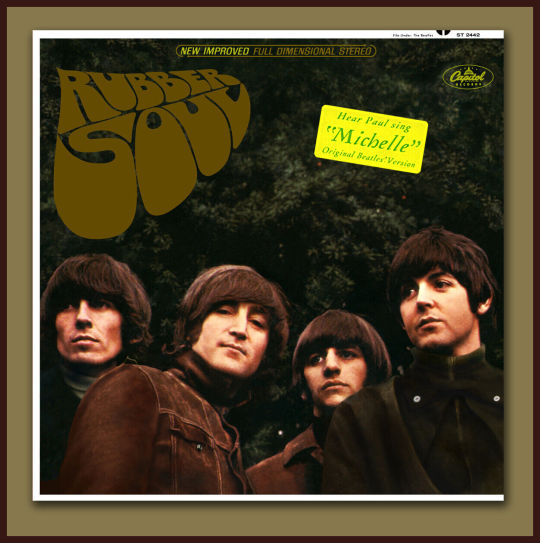
0 notes

